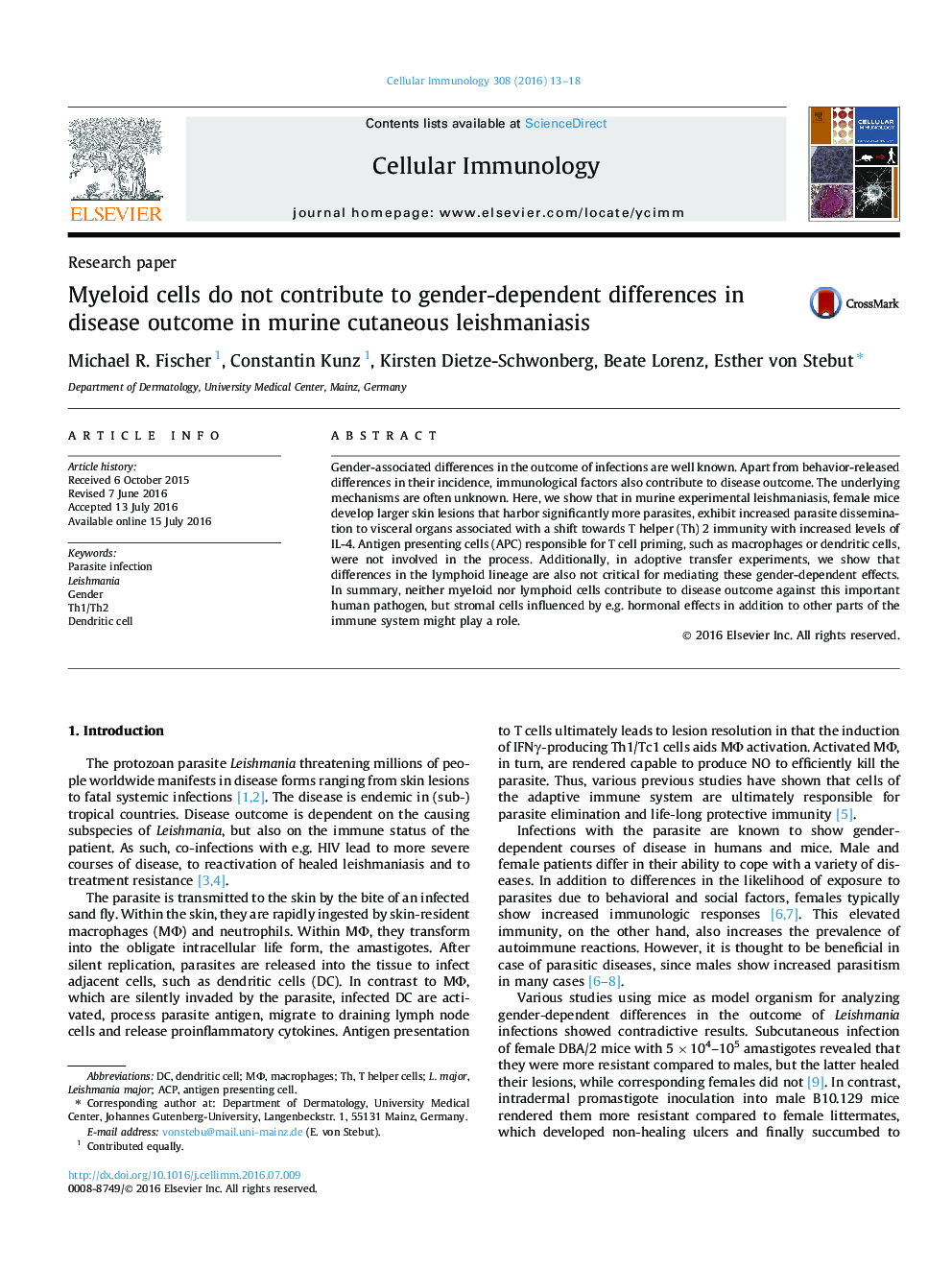| Article ID | Journal | Published Year | Pages | File Type |
|---|---|---|---|---|
| 5530779 | Cellular Immunology | 2016 | 6 Pages |
â¢Females mice are more susceptible to cutaneous leishmaniasis than male mice.â¢Worsening of disease in females is associated with a gender-dependent shift towards Th2.â¢Myeloid cells are not responsible for L. major infection susceptibility of females compared to males.
Gender-associated differences in the outcome of infections are well known. Apart from behavior-released differences in their incidence, immunological factors also contribute to disease outcome. The underlying mechanisms are often unknown. Here, we show that in murine experimental leishmaniasis, female mice develop larger skin lesions that harbor significantly more parasites, exhibit increased parasite dissemination to visceral organs associated with a shift towards T helper (Th) 2 immunity with increased levels of IL-4. Antigen presenting cells (APC) responsible for T cell priming, such as macrophages or dendritic cells, were not involved in the process. Additionally, in adoptive transfer experiments, we show that differences in the lymphoid lineage are also not critical for mediating these gender-dependent effects. In summary, neither myeloid nor lymphoid cells contribute to disease outcome against this important human pathogen, but stromal cells influenced by e.g. hormonal effects in addition to other parts of the immune system might play a role.
